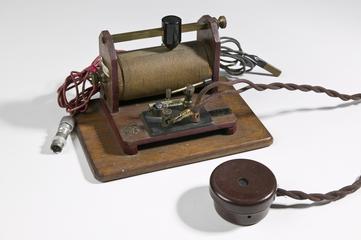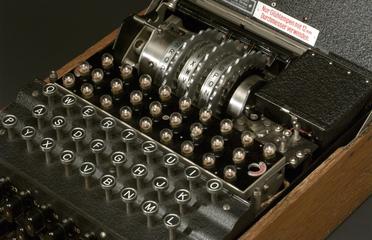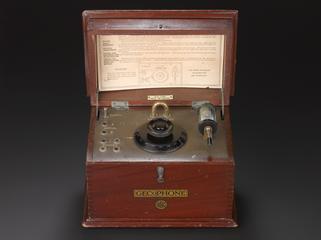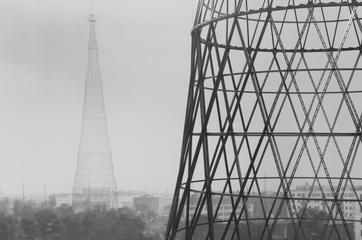
GL Mk.1 radar transmitter, 1939
GL Mk.1 radar transmitter. When used in its operational role, the console was housed in a small rotational cabin, mounted on a turntable, or a mobile chassis, with the aerial system above on a framework which could be raised or lowered and dismantled for travelling. Power supplies, telephones, and input / output information lines were fed into the cabin via a system of slip-rings and the cabin rotated by a traversing control column. Synchros carried high-speed and low-speed range and bearing data to a predictor which, after processing the information, inserting various corrections, and calculating a fuze setting, produced polar co-ordinates for laying a battery of guns.
The GL Mk.1 transmitter was designed to radiate a pulse of 1.5-3 microseconds duration at a recurrence frequency of 800-2000Hz, the radio frequency being 55-85MHz and the pulse having a peak power of the order of 50kW.
The timing of the pulses was controlled by the modulator unit which was situated, with a spare, in the upper left-hand compartment. In this unit, a variable-frequency blocking oscillator and associated shaping circuits generated pulses which, after amplification, passed to the radio-frequency oscillators as positive pulses super-imposed on the steady negative 100-volt grid bias. The grid bias of the oscillator valves was thus reduced nearly to zero for a few microseconds every time the pulse was generated.
The oscillator valves were a pair of VT58 valves connected in a push-pull tuned-grid tuned-anode circuit in which lecher lines were employed instead of lumped inductance and capacitance. A low impedance line connected the cathode circuit of the oscillators to the grids of the neutralised triode amplifiers, the anode circuit of which was also tuned by the lecher lines and tapped to feed the aerial. A bank of lamps was provided to simulate the aerial load for tunning purposes and the power output was measured by comparing the brightness with that of a standard lamp supplied from the mains through a variable resistance calibrated in watts.
A cathode ray monitor was fitted at the left-hand side in order to check the pulse shape and facilitate tuning. It was fed from tapping points on the high frequency (hf) choke in the aerial coupling system while the time-base deflection voltage was derived from the modulator unit.
Gun Laying (GL) Mk. 1 radar transmitter was an early example of the series of radar transmitters developed by Metropolitan Vickers Limited, and the staff of Bawdsey Research Station in 1938/1939 and was one of the first commercially made radar transmitters ever produced. Other closely similar transmitters were the later Marks of GL transmitters, the MB series, and the Chain Home Low (CHL) series. GL Mk. 1 was an early warning and fire control continuous tracking radar system. This example dates from 1939 but it was in use from August 1939 to April 1941 when it was replaced by GL2. Approximately 400 GL Mk.1 radar transmitters were produced.
The GL transmitters and the corresponding receivers were primarily designed to facilitate anti-aircraft gun-laying by accurately determining the range and bearing of enemy aircraft. They were required to indicate rang within about 50 yards (46 metres) up to ranges of 14,000 yards (12.8km).




